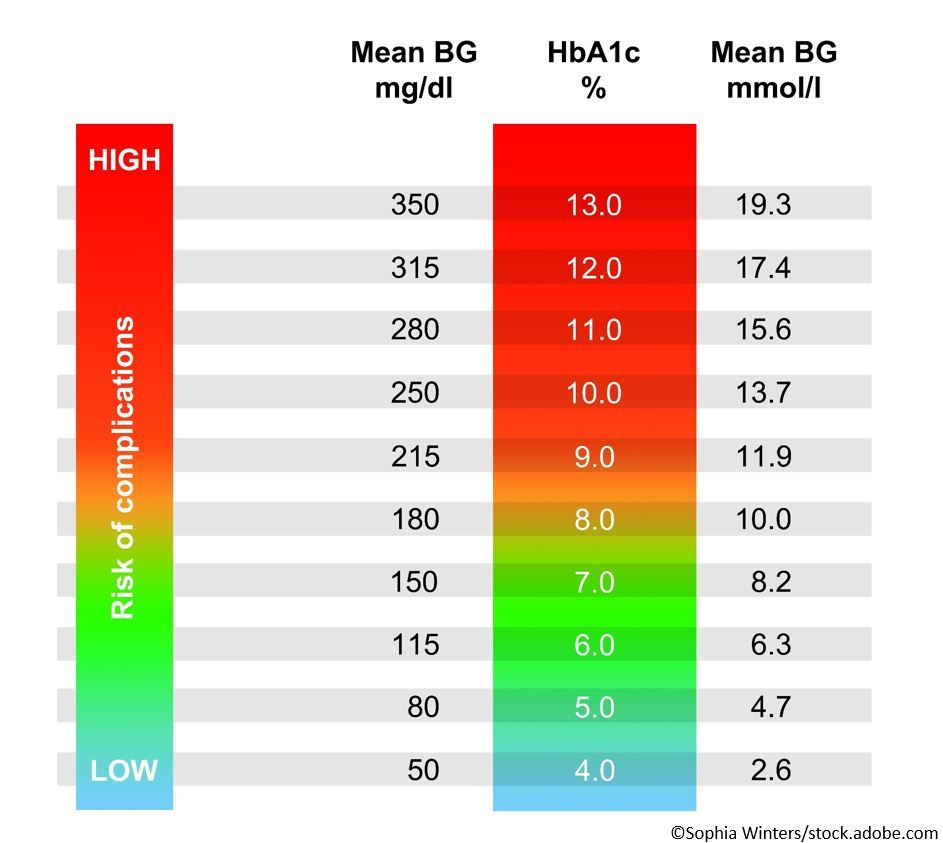- Clinical Technology
- Adult Immunization
- Hepatology
- Pediatric Immunization
- Screening
- Psychiatry
- Allergy
- Women's Health
- Cardiology
- Pediatrics
- Dermatology
- Endocrinology
- Pain Management
- Gastroenterology
- Infectious Disease
- Obesity Medicine
- Rheumatology
- Nephrology
- Neurology
- Pulmonology
Glycemic Variability with Tirzepatide Significantly Lower vs Degludec as Assessed by CGM
ADA 2022. Tirzepatide was associated with significantly greater TIR, many fewer episodes of hypoglycemia, and less glycemic excursion vs insulin degludec in SURPASS-3 CGM.
In persons with type 2 diabetes (T2D) using continuous glucose monitoring (CGM), those treated with tirzepatide compared with insulin degludec (degludec) spent significantly greater time in prescribed glycemic range (TIR), experienced significantly less within- and between-day glycemic variability (GV), and significantly fewer hypo- and hyperglycemic events, according to an abstract presented at the American Diabetes Association 82nd Scientific Sessions, June 3-7, 2022.

Tirzepatide, a novel dual glucose-dependent insulinotropic polypeptide/glucagon-like peptide-1 (GIP/GLP-1) receptor agonist was approved by the US Food and Drug Administration in May 2022 as an adjunct to diet and exercise to reduce hyperglycemia in adults with T2D. The label approval was based on the phase 3 SURPASS clinical trial program that included a CGM substudy in the SURPASS-3 trial.
Participants enrolled in SURPASS-3 were insulin-naïve, treated with metformin alone or in combination with an SGLT-2 inhibitor, and randomly assigned to receive once-weekly tirzepatide or once daily insulin degludec.
Analysis of the SURPASS-3 CGM substudy data showed that participants randomized to tirzepatide spent up to 91% of time in range (TIR; 71-180 mg/dL) vs 75% TIR for insulin degludec-treated patients (P<.001). Investigators also report that the within-day coefficient of variation was lower for tirzpatide vs for degludec (16% vs 24%, P<.001).
The current analysis of the SURPASS-3 substudy reports additional prespecified GV measures (obtained via CGM) at follow-up of 52 weeks. Substudy participants numbered 243, had a mean age of 57 years, and T2D duration of 8.8 years. Mean baseline HbA1c for the group was 8.14%.
Investigators found the between-day GV (measured as mean of daily differences) was significantly less for tirzepatide (5-15 mg) vs degludec (P<.001).
Frequency and severity of both hypoglycemic and hyperglycemic events were lower for participants in the tirzepatide group. Hypoglycemic events, as measured by the low blood glucose (BG) index, were significantly lower at all doses of tirzepatide vs degludec (10 mg, P<.05; 5, 15 mg, P<.001). Hyperglycemic events, measured by the high BG index, similarly were significantly lower for tirzpepatide- vs degludec-treated participants (tirzepatide 5 mg, P<0.05; 10, 15 mg, P<.001).
The BG risk index was significantly less at all doses of tirzeptaide compared to degludec (5 mg, P<.05; 10, 15 mg, P<.001).
Concluding the study abstract, the authors state that tirzepatide showed “clinically meaningful and significant reductions in the risk of hyperglycemia and hypoglycemia in comparison to insulin degludec in people with T2D.”
Reference: Bergenstal RM, Bartee A, Zeytinoglu M, et al. Glycemic variability of tirzpeatide vs insulin degludec in people with type 2 diabetes using continuous glucose monitoring (SURPASS-3 CGM). Diabetes 2022;71(Supplement_1):728-P
